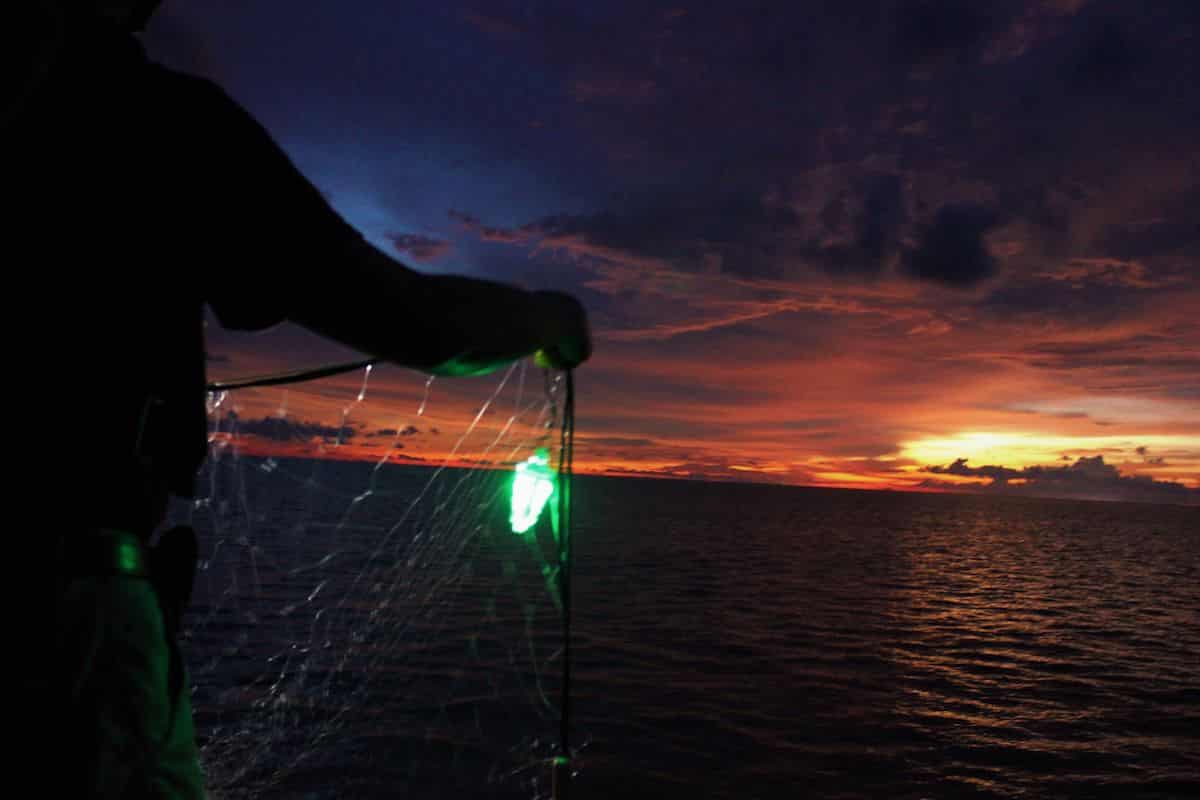
LED-Illuminated Gillnets Reduce Bycatch of Sea Turtles, Sharks and Other Marine Life, Study Finds

It’s no secret that fishing gear often results in the entanglement of untargeted marine species, including those that are endangered, threatened and protected like seabirds, sea turtles, sharks and marine mammals. Gillnets are one of the most widely used types of fishing gear in the world and are often the culprit in this unwanted bycatch.
In a new study, a research team has discovered that using gillnets illuminated by LED lights greatly reduces accidental bycatch of sea turtles, rays, sharks and other fish, Wildlife Conservation Society (WCS) reported. Furthermore, the market value and catch rates of targeted fish were not affected by the lighted nets. The study, “Net illumination reduces fisheries bycatch, maintains cash value, and increases operational efficiency,” was published in the journal Current Biology.
“These results demonstrate that the potential benefits of illuminated nets extend well beyond sea turtles, while demonstrating the strong promise for net illumination to mitigate discarded bycatch in similar coastal gillnet fisheries throughout the world’s oceans,” said Arizona State University assistant research professor Jesse Senko, lead author of the study, as WCS reported.
The researchers found that the total bycatch of fisheries was reduced by 63 percent, while the bycatch of sharks, skates and rays was reduced by 95 percent. Humboldt squid catch was reduced by 81 percent and finfish were caught 48 percent less often.
Animals who are accidentally caught in gillnets are often injured or do not survive and are dumped in the sea. This secondary catch of untargeted species has increased the decline of endangered species and had an impact on coastal ecosystems, reported WCS.
“Gillnets are ubiquitous because they are inexpensive and catch everything that passes them. This work is exciting because it provides a practical solution to increasing gillnets’ selectivity and avoiding their bycatch,” said WCS director of small-scale fisheries and co-author of the study, Hoyt Peckham, as reported by Nature World News. “Emerging technologies should help us incorporate this kind of lighting into gillnet materials so that adopting this solution will become a no-brainer for fishers,” Peckham said.
Along the coast of Mexico’s Baja California Sur, the research team attached green LED lights to gillnets every ten meters, reported WCS. This not only nearly eliminated the unwanted catch of sharks, skates and rays, but, because the fishers needed to remove fewer animals caught in their nets, this increased their efficiency. In fact, the amount of time it took to retrieve and disentangle the nets was reduced by 57 percent.
“Making life easier for fishers by reducing the amount of time untangling bycatch is equally essential as reducing the bycatch biomass in nets,” said John Wang, study co-author and fisheries ecologist with the National Oceanic and Atmospheric Administration’s Pacific Islands Fisheries Science Center, Earth.com reported. “It is important for fishers to know that there are tangible benefits for them. This is critical for the adoption of such technologies by the fishing industry,” Wang added.

 233k
233k  41k
41k  Subscribe
Subscribe 